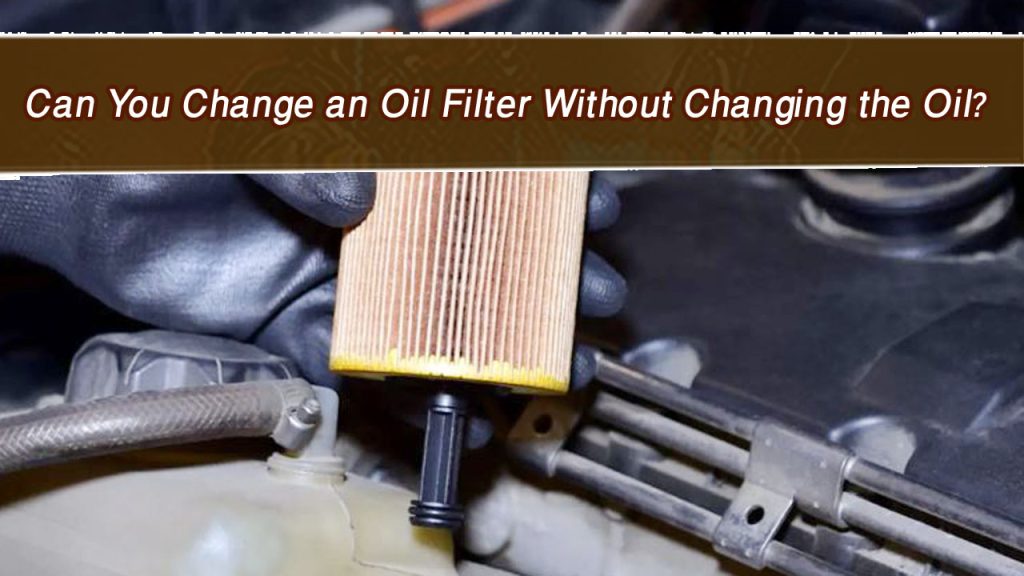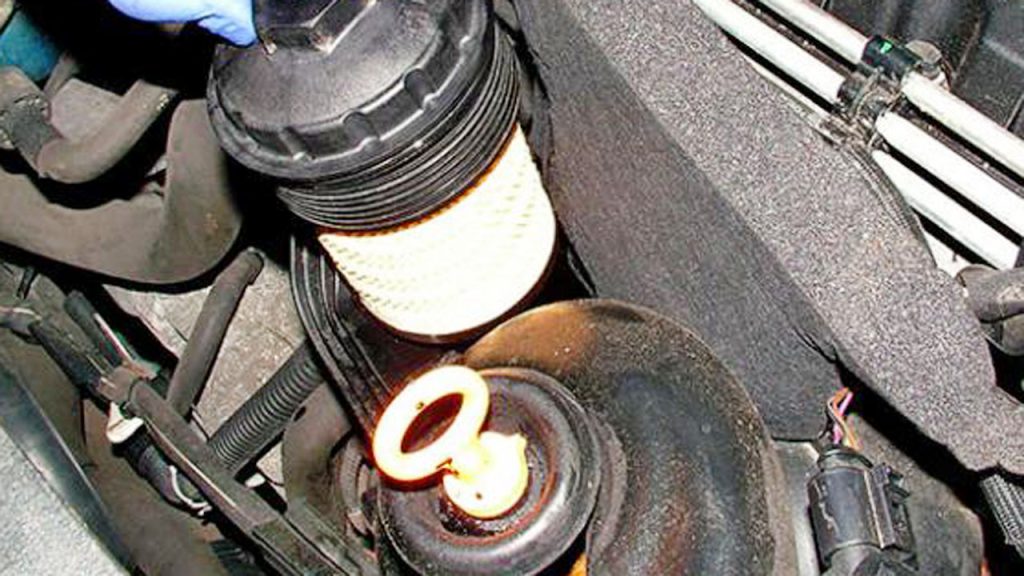When it comes to maintaining a vehicle, there’s always a debate about how much you can do yourself and what requires a trip to the mechanic. One of the more common questions I’ve come across is whether you can change an oil filter without changing the oil. It’s a valid question, especially if you’re aiming to save time, money, or resources.
The short answer is yes, you can change an oil filter without completely draining and replacing the oil, but it’s not always the best approach. In this article, I’ll walk you through the ins and outs of this process, explain when it’s a good idea, and share some practical tips to make sure you’re doing it right.

Image by parkers
What Is the Role of an Oil Filter in Your Vehicle?
Let’s start with the basics. Your engine oil serves multiple purposes: it lubricates moving parts, reduces friction, and helps cool the engine. Over time, as oil circulates, it picks up debris, contaminants, and tiny metal particles from the engine. That’s where the oil filter comes in—it traps these impurities, allowing only clean oil to flow through the system.
Without a properly functioning oil filter, contaminants can build up in the engine, leading to poor performance, reduced fuel efficiency, and even costly damage. This makes the oil filter a small yet critical component of your car’s health.
Can You Change the Oil Filter Without Changing the Oil?
Yes, it’s possible to change your oil filter without doing a full oil change. However, whether you should do it depends on the situation. Here’s what you need to know:
Oil Level Retention
When you remove the oil filter, a small amount of oil will inevitably drain out, but the majority of the oil in the engine will remain. This means you can replace the filter without having to fully drain the oil.
When It Makes Sense
Changing the filter alone might make sense if you’ve recently changed the oil but suspect the filter is clogged or damaged. For example, if you’ve noticed reduced oil pressure or a drop in performance, the filter might be the culprit.
Potential Drawbacks
The biggest downside to changing the filter without the oil is that the remaining oil might still contain contaminants. Ideally, you want clean oil flowing through a clean filter for maximum engine protection.
Steps to Change the Oil Filter Without Draining the Oil
If you’ve decided to replace the oil filter without changing the oil, follow these steps to ensure a smooth process.
Tools You’ll Need
- New oil filter
- Oil filter wrench
- Clean rag or paper towels
- Funnel (optional)
- A small amount of fresh oil for the new filter
Step-by-Step Guide
Prepare the Vehicle
- Park on a level surface and let the engine cool for at least 15-20 minutes.
- Gather all the tools and the new filter before starting.
Locate the Oil Filter
- Refer to your owner’s manual if you’re unsure of the filter’s location. Most are easy to access, but some may require you to lift the vehicle.
Remove the Old Filter
- Place a small pan or rag under the filter to catch any oil that drips out.
- Use the oil filter wrench to unscrew the filter. Turn it counterclockwise until it comes off.
Prepare the New Filter
- Before installing the new filter, apply a thin layer of fresh oil to the rubber gasket. This creates a better seal and makes it easier to remove during the next change.
Install the New Filter
- Screw the new filter into place by hand. Once it’s snug, give it another quarter turn. Avoid overtightening, as this can damage the gasket.
Top Off the Oil (If Needed)
- Check the oil level using the dipstick. If you’ve lost a significant amount of oil during the process, add a little fresh oil to bring it back to the recommended level.
Check for Leaks
- Start the engine and let it run for a minute. Check around the new filter for any leaks. Tighten slightly if necessary.
When Should You Replace the Filter and Oil Together?
While it’s possible to change just the filter, there are times when it’s better to do a complete oil change.
Scheduled Maintenance: Most manufacturers recommend changing the oil and filter together every 3,000 to 7,500 miles, depending on the type of oil and driving conditions.
Contaminated Oil: If the oil appears dark, gritty, or smells burnt, it’s time to replace both the oil and the filter.
Extended Oil Change Intervals: If you’re using synthetic oil and following extended intervals, it’s wise to replace the filter at the same time to ensure optimal engine protection.
Benefits of Replacing the Oil Filter Without Draining the Oil
There are a few scenarios where this approach can be advantageous:
- Cost Savings: If you’ve already invested in fresh oil recently, replacing just the filter can save you money.
- Quick Fix: When you’re short on time but suspect the filter is causing issues, this can be a temporary solution.
- Emergency Repairs: If you’re on the road and notice signs of a clogged filter, replacing it can prevent further engine damage until you can perform a full oil change.
Drawbacks to Consider
While it’s a convenient option, changing the filter without the oil isn’t a perfect solution. Here are some potential downsides:
- Residual Contaminants: The remaining oil might still carry debris and impurities, reducing the effectiveness of the new filter.
- Incomplete Maintenance: Over time, oil degrades and loses its ability to lubricate properly. Relying on old oil can accelerate engine wear.
- Messier Process: Removing the filter without draining the oil can result in more spillage, especially if the filter is located in a tricky spot.
Comparing Filter-Only Replacement vs Full Oil Change
| Aspect | Filter-Only Replacement | Full Oil Change |
|---|---|---|
| Cost | Lower | Higher (includes oil cost) |
| Time | Quicker | Longer |
| Effectiveness | Partial (old oil remains) | Complete (new oil and filter) |
| Recommended Frequency | Occasionally, as needed | Every 3,000-7,500 miles |
Signs You May Need to Replace Your Oil Filter
If you’re unsure whether your oil filter needs attention, here are some common signs to watch for:
Low Oil Pressure Warning: A clogged filter can restrict oil flow, triggering the oil pressure warning light on your dashboard.
Dirty Exhaust Smoke: Black or dirty smoke from the exhaust could indicate poor oil filtration and combustion.
Reduced Engine Performance: A clogged filter can cause sluggish acceleration, lower fuel efficiency, and decreased overall performance.
Metallic Engine Noises: Insufficient oil flow can result in grinding or knocking sounds, indicating increased friction between engine components.
Conclusion
So, can you change an oil filter without changing the oil? Absolutely. But whether you should depends on your vehicle’s condition and maintenance schedule. Replacing the filter alone can be a quick and cost-effective solution in certain situations, such as when you’ve recently changed the oil or are troubleshooting specific issues.
However, for optimal engine health, it’s always best to replace the filter and oil together during regular maintenance intervals. This ensures that both components are clean and functioning properly, giving your engine the best chance of long-term performance and reliability.
A little effort in routine maintenance can save you from costly repairs down the road. So, whether you’re tackling a full oil change or just swapping out the filter, take the time to do it right. Your car—and your wallet—will thank you.
FAQs
Can I reuse an old oil filter?
No, oil filters are designed for single use and should be replaced every time they’re removed.
How much oil will I lose when changing the filter?
Typically, only a small amount of oil will drain out—usually less than a quart.
Is it bad to replace the filter but not the oil?
It’s not ideal, as old oil may still contain contaminants. However, it can be a temporary solution if the oil is relatively fresh.
How often should I change my oil filter?
Most manufacturers recommend replacing the filter with every oil change, usually every 3,000 to 7,500 miles.
Can I use any oil filter for my car?
No, always use an oil filter that’s compatible with your vehicle’s make and model for the best results.


